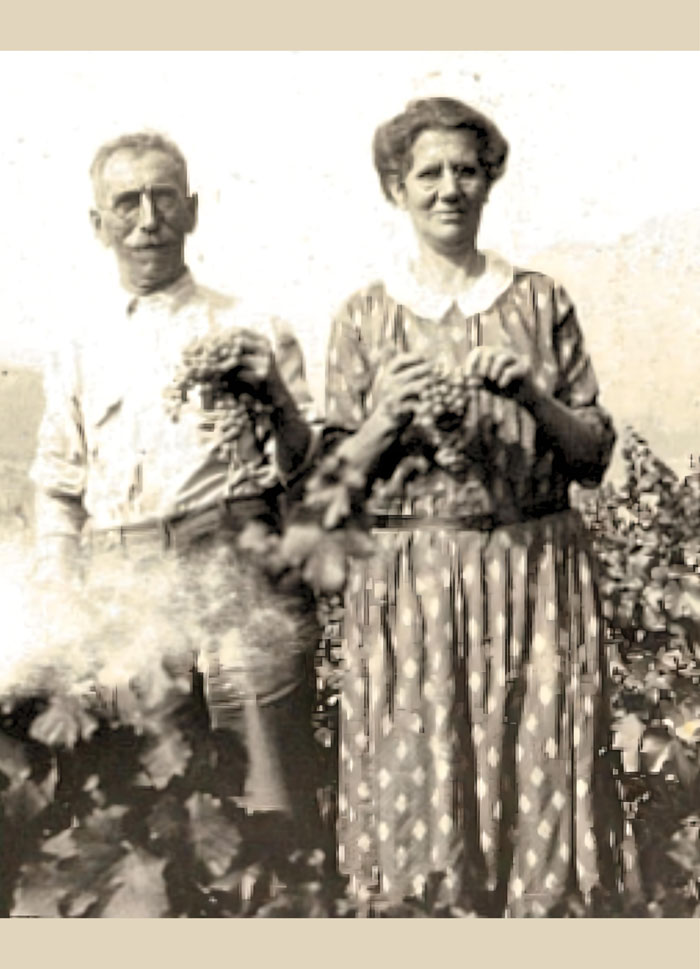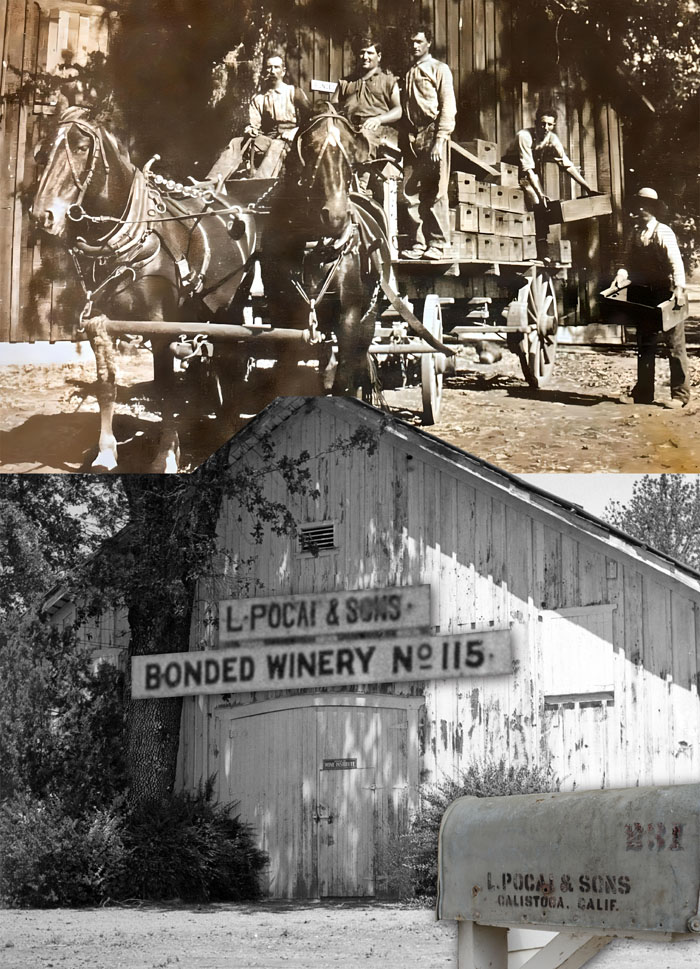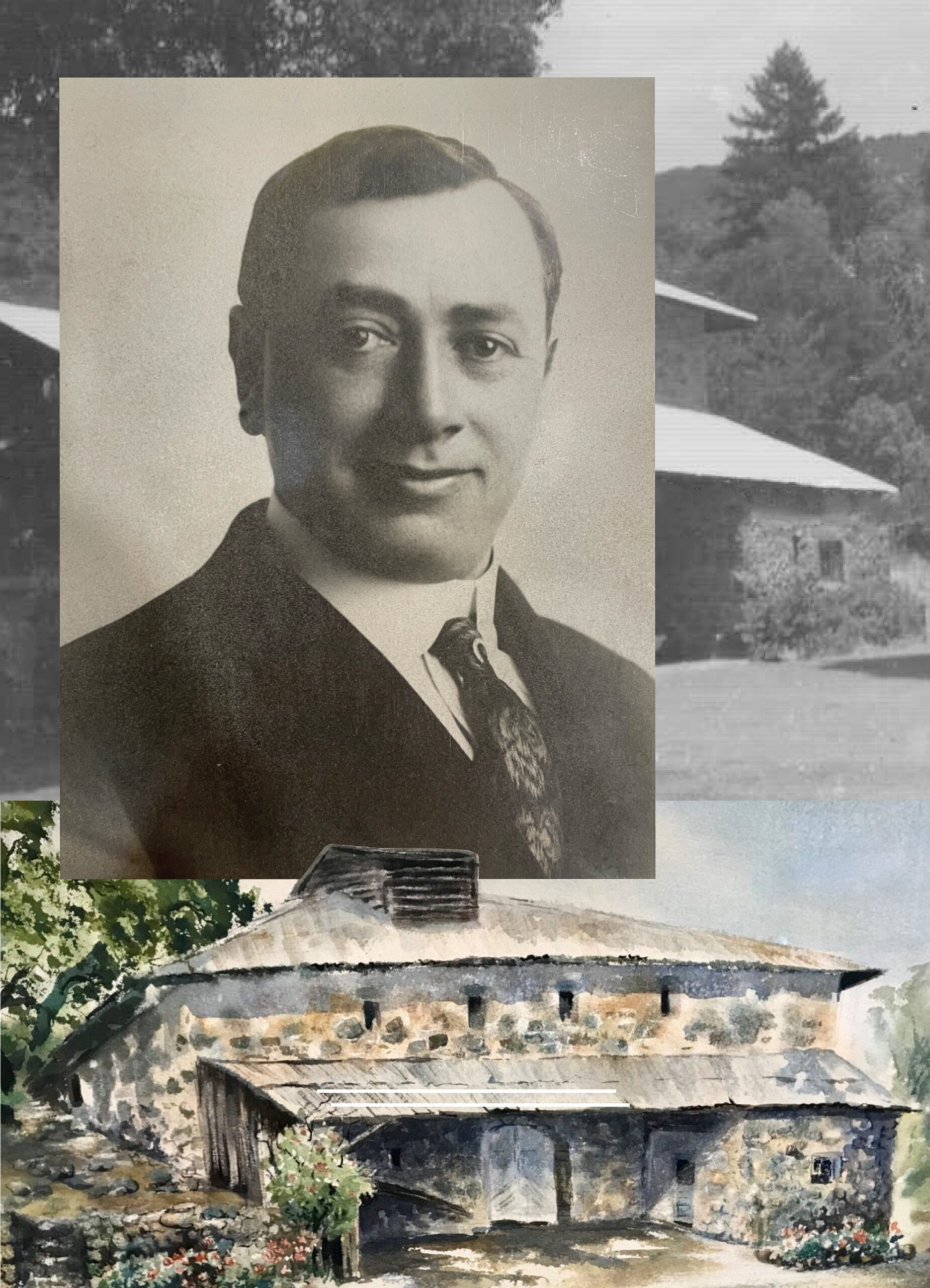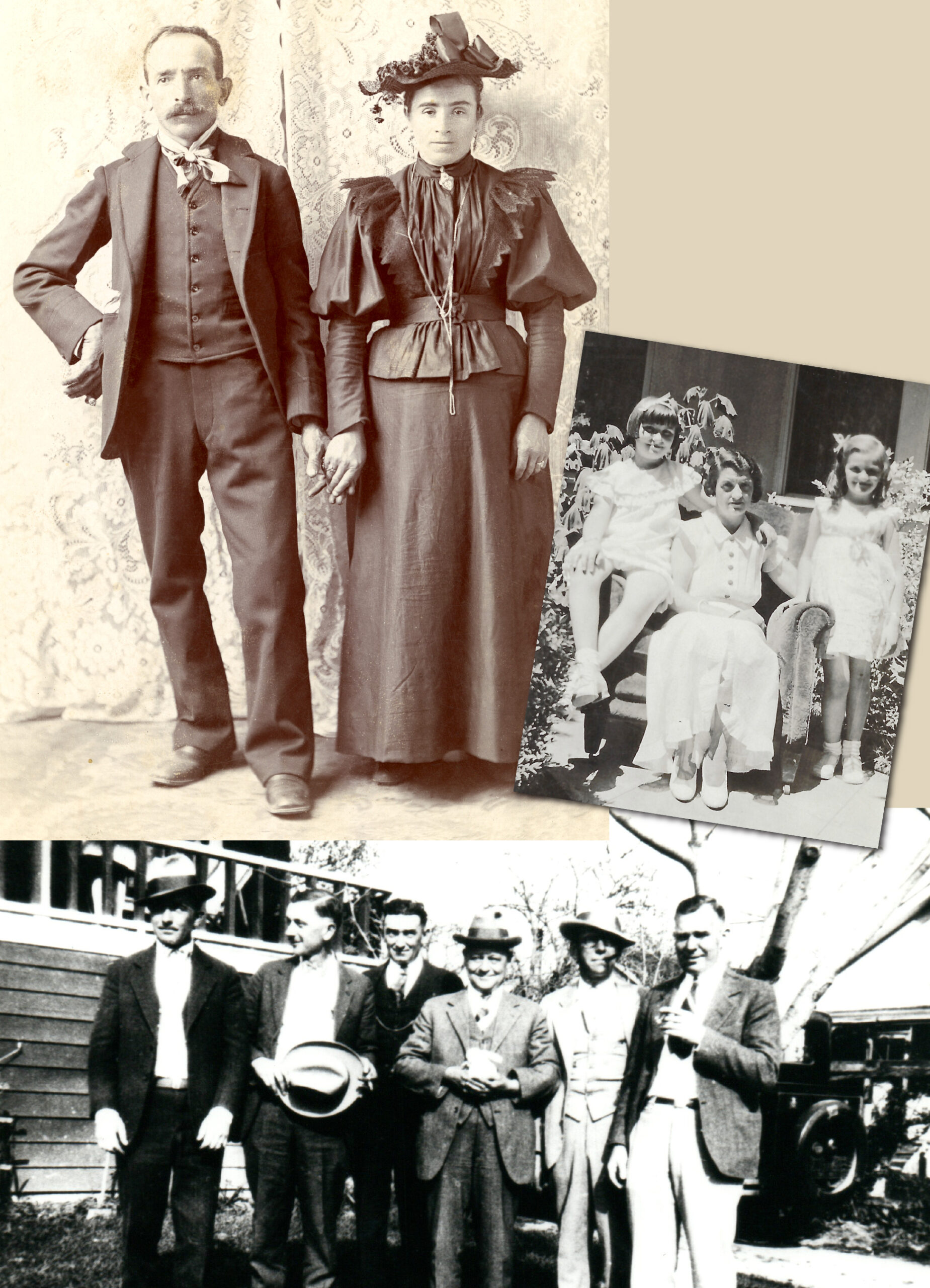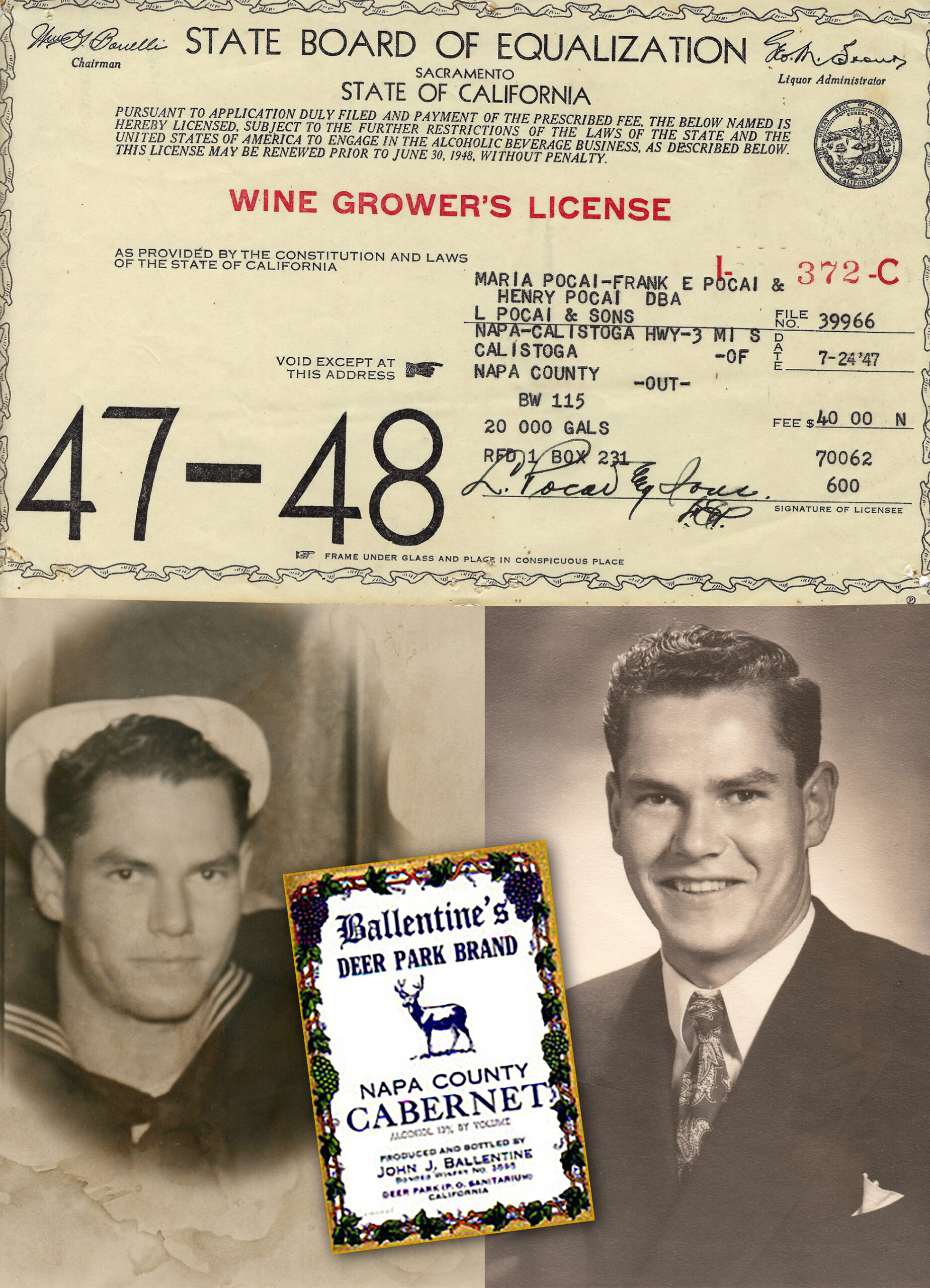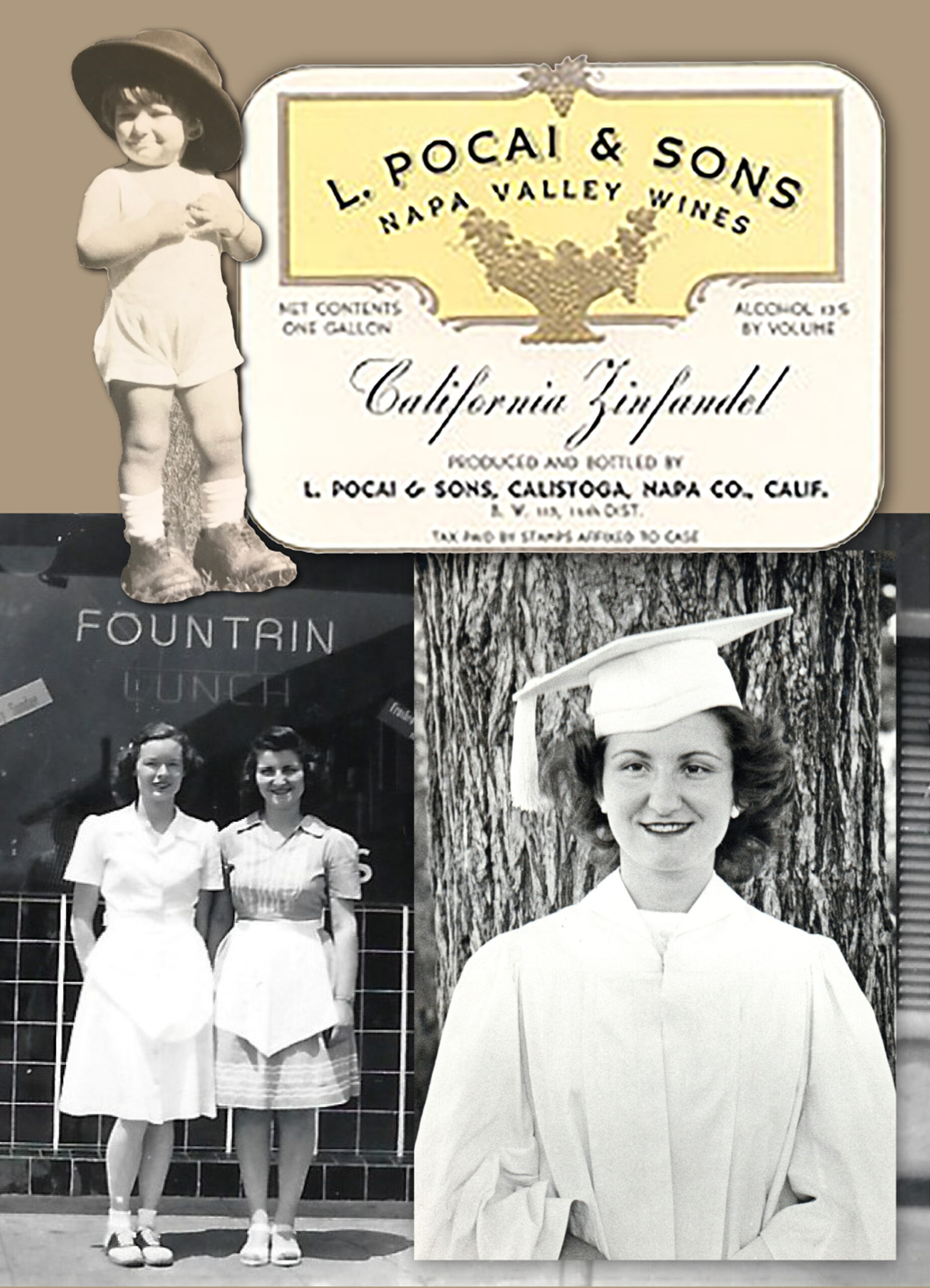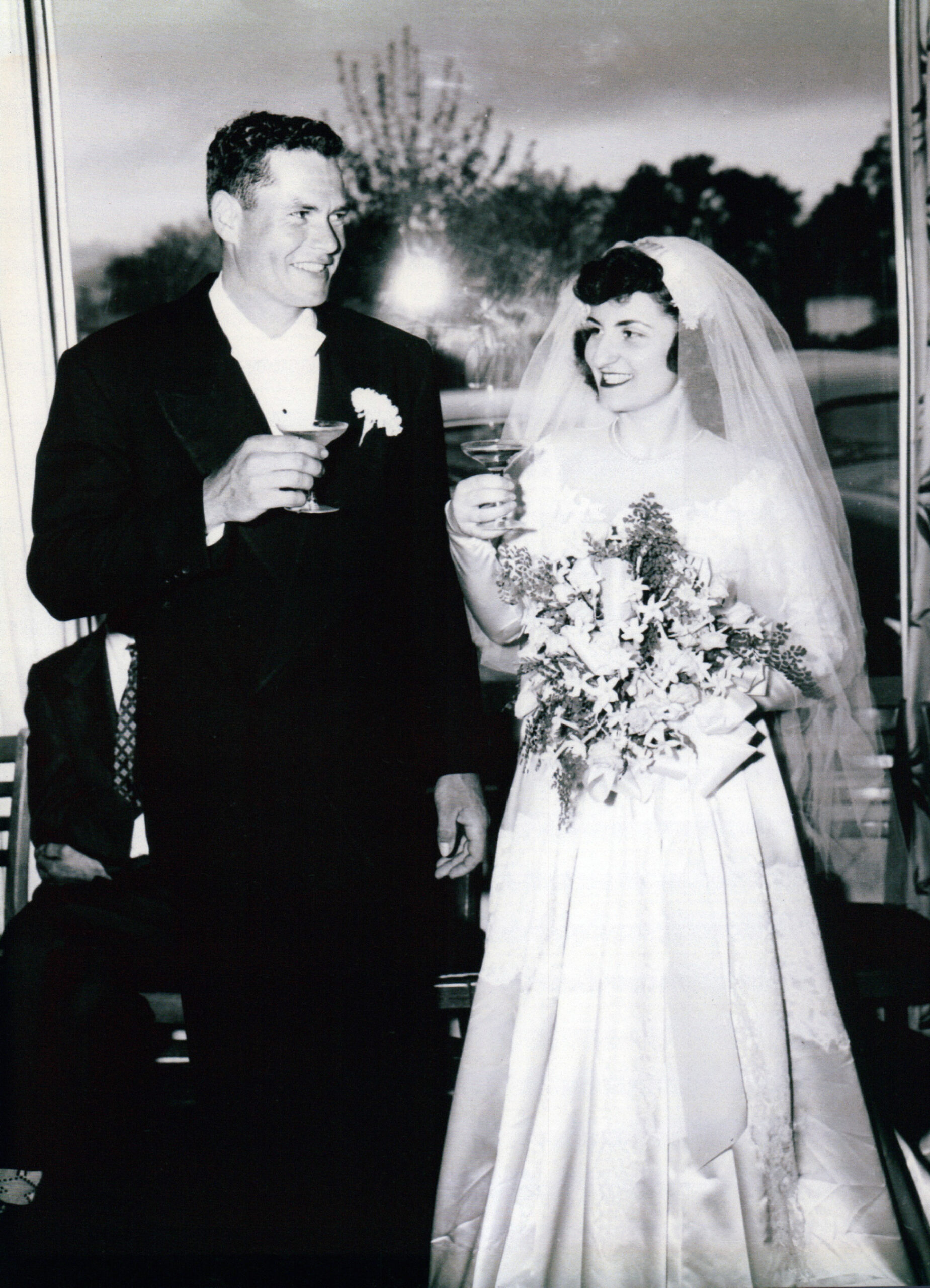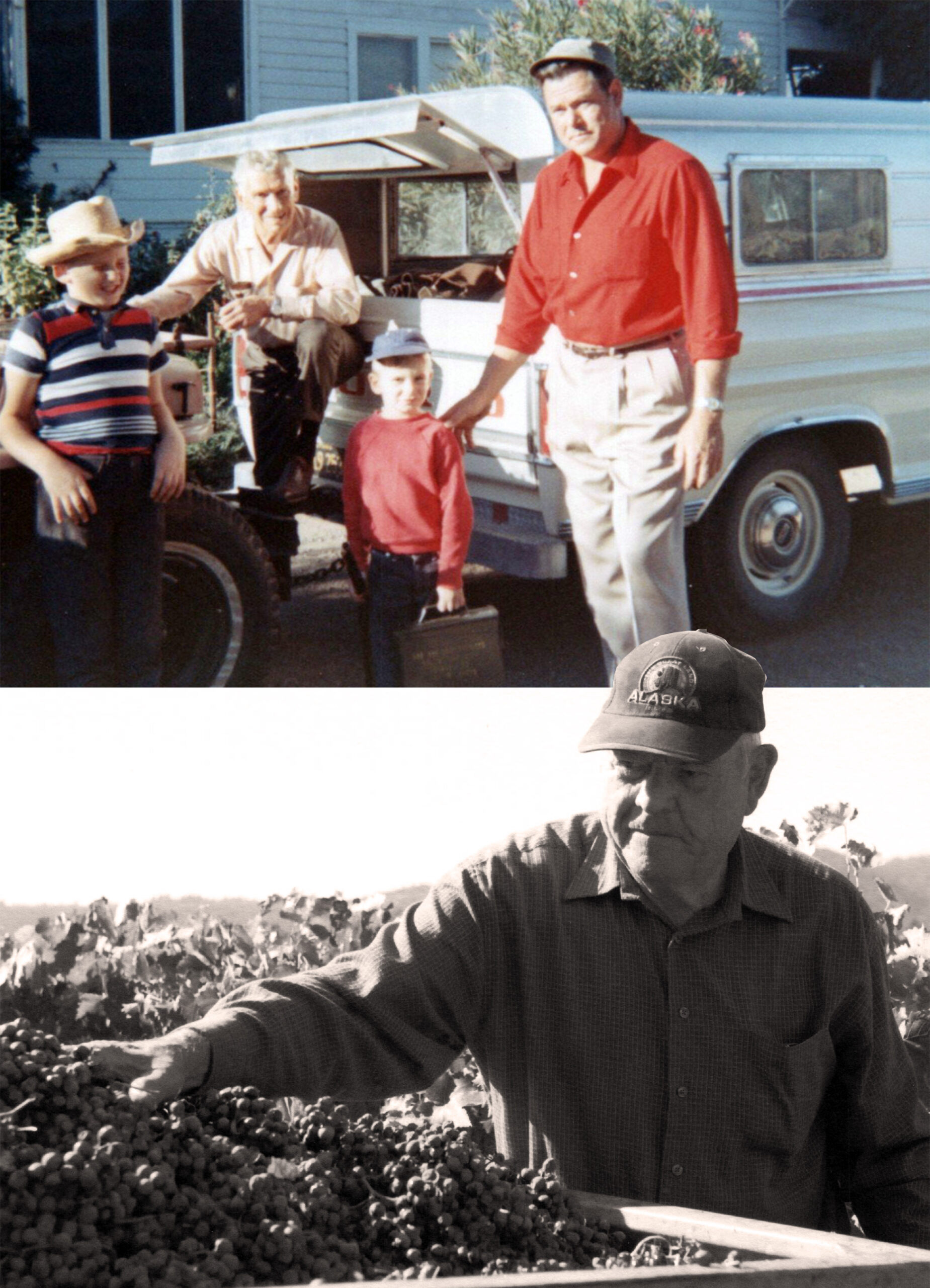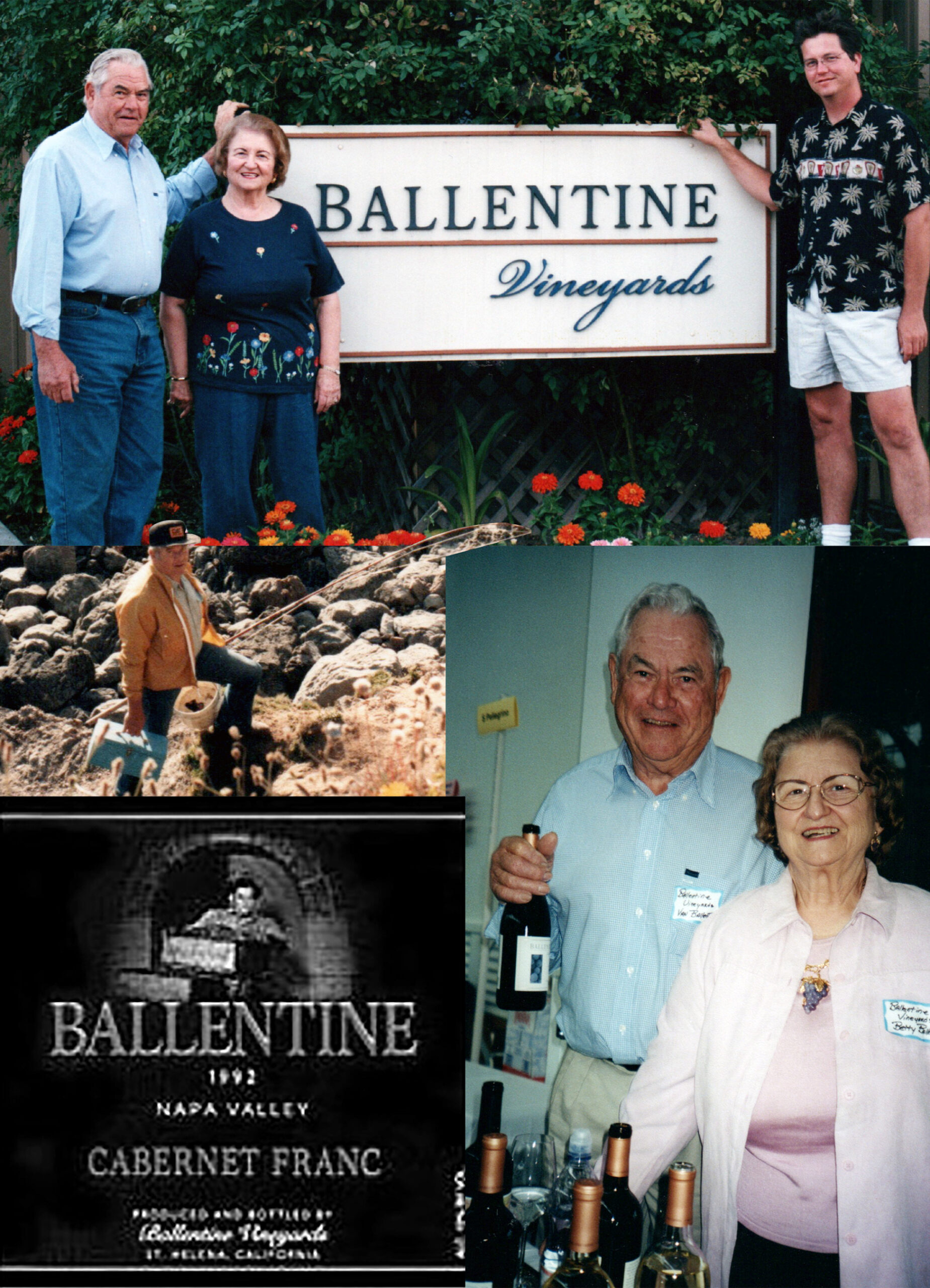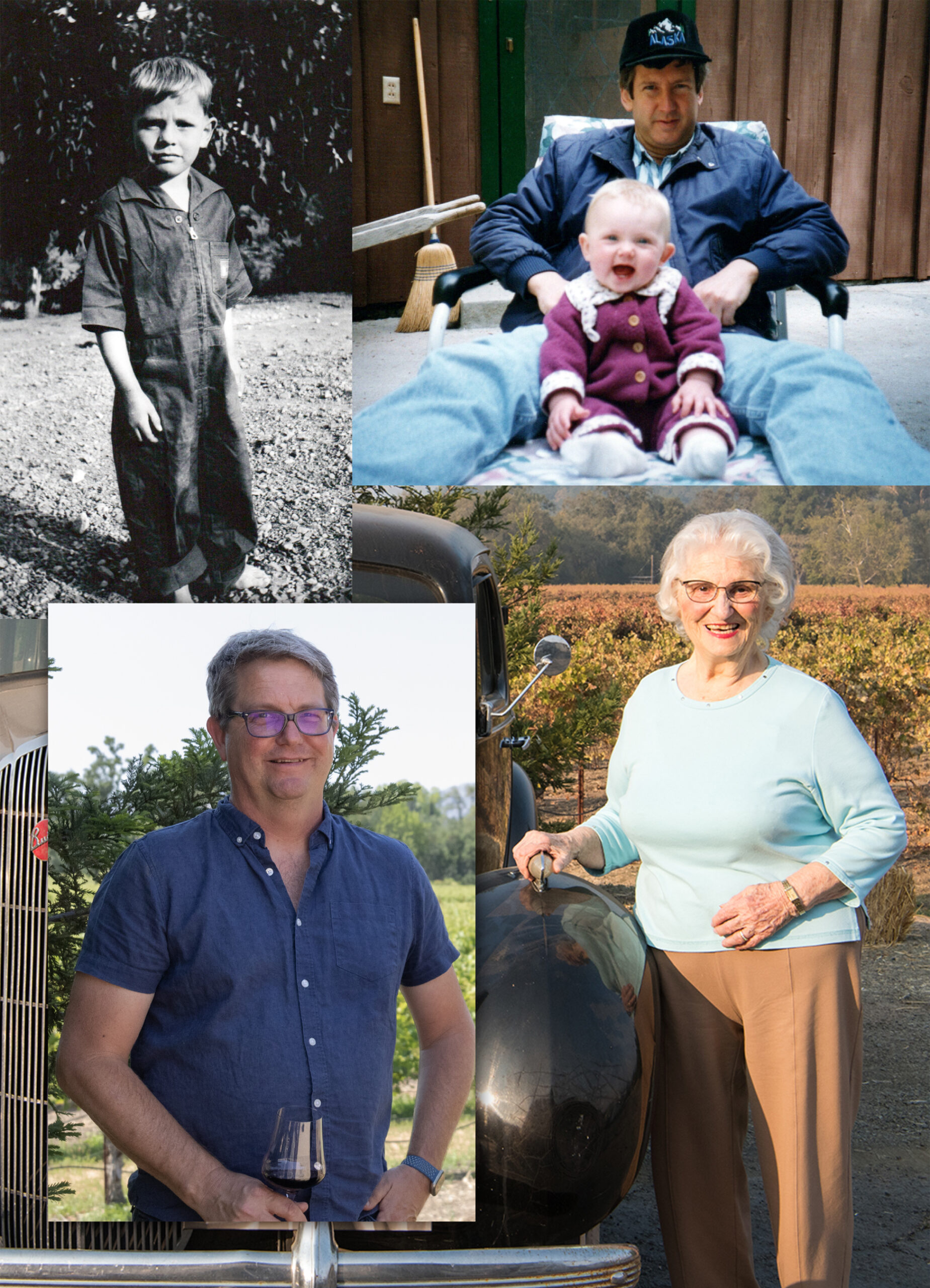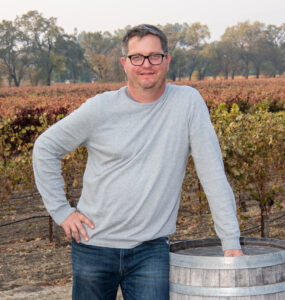The Ballentine Legacy
- 1883-1895
- 1905-1912
- 1910-1924
- 1923 – 1935
- 1926-1950
- 1947-1954
- 1953-1967
- 1969-1982
- 1992-2002
- 2005-Present
-
Maria & Libero Pocai
First Generation
At 22 years old, Frank Ballentine’s maternal great-grandfather, Libero Pocai, immigrated from Lucca, Italy, to Guerneville, California, after his mother passed. He came to make a few thousand dollars in the logging industry. Libero always intended to return to Italy to “be a big shot.” While in America, his father passed away, and so he later told the Calistoga Weekly (1971), “This is my country.” Libero stayed in California and met Maria Cristofani, who also immigrated from Italy at 18 years old. They married in Guerneville, then relocated to San Francisco, where they worked in the wood and coal business. Maria’s health was poor in the city, so they relocated back to the country, making their home in Calistoga with their two children, Frank (1895) and Henry.
-
L. Pocai & Sons Winery and Vineyards
First GenerationFirst Generation
Long before Napa Valley made its mark on the world wine stage, Libero Pocai purchased 60 acres of Napa Valley land from Rebecca Steele Way for $10.00 in gold coins. Today, this property is known as Pocai Vineyard in Calistoga. Libero and Maria raised their two boys, Frank and Henry, on the estate and made their dream of having a vineyard, growing grapes, and making wine a reality. Together with Frank and Henry, they worked sunrise to sunset with horses to plant 55 acres of vineyard with Zinfandel, the prominent variety at the time.
In 1912, the Pocai family applied for the 115th winery bond in Napa Valley and named their winery L. Pocai & Sons. The winery and vineyard were the family’s livelihood. They raised grapes and delivered them to the train station in a horse-drawn wagon. The wines they made were aged in oak and redwood barrels. Charles Krug in St Helena also purchased wine from their winery. At its peak, L. Pocai & Sons produced 50,000 gallons of wine.
-
John J. Ballentine
First Generation
John J. Ballentine, Frank Ballentine’s paternal grandfather, was an immigrant from Omagh in Northern Ireland’s Tyrone County who came to America at 26 years old by way of the Columbia steamship from Glasgow to New York. He headed West and settled in San Francisco. John worked as an auto mechanic and chauffeur when he married his first wife, Marie Carrere, a French dressmaker, in 1914. They had two children, Lorraine (1913) and Robert (1918), whom they raised in St. Helena and remained in the Bay Area for the rest of their lives. In 1922, John purchased the old Sutter Home Winery from Massimo and Adelina Ferrero on Howell Mountain. For $7,150.00 in gold coins, the Ballentines acquired 160 acres of land, winemaking equipment, a mule, a horse, two cows, a dozen and a half chickens, and hay in the barn. He renamed it Ballentine’s Deer Park Winery after his family’s cattle ranch and dairy farm in Ireland. In 1923, his beloved wife Marie passed away.
Less than a year later, John met Ellen Gerhardt from New Mexico and remarried. They had two children, Helen (1926) and William “Van” (1927), both of whom were born at the Sanitarium in Deer Park.
John was among the first to apply for a winery bond when prohibition was repealed in 1933. After receiving Bond #3533, he produced his inaugural wine, a Cabernet Sauvignon, among the first in Napa Valley. With a 65,000-gallon capacity, he also produced Zinfandel and Riesling under Ballentine’s Deer Park Winery. During this time, John Ballentine was the first to suggest to Robert Mondavi that their family should consider reviving Charles Krug’s pioneer stone winery.
-
Anna and Frank Pocai
Second Generation
Frank Pocai met and married Anna (Angela) Cavagnaro the day after Christmas in 1923. Her parents also immigrated from Italy in 1863 and made their way to Calistoga after working in the mines. Frank and Anna were both very active in the Calistoga community, participating in organizations like the Native Sons and Native Daughters, as well as the Calistoga Fair Association, the Wine Institute, and the Napa County Farm Bureau. In addition to helping his father, Libero, with the vineyard and winery, Frank also worked as a carpenter. He and Anna had two daughters, Betty (1926) and Marie, who, like their parents, were also very active. Betty, fondly known as Pokey, was the student body secretary for her class every year and spent her free time working as a soda jerk at Lommel’s soda fountain. Libero passed away in 1935, leaving the winery operations to Maria, Frank, and Henry.
-
William “Van” Ballentine
Second Generation
William “Van” Ballentine grew up in his family’s winery and started making wine at seven. By 1944, Van, with his father John’s help, purchased another Napa Valley vineyard just North of St. Helena, known today as Betty’s Vineyard. This property is home to our present-day winery and Frank Ballentine’s childhood home. After graduating from St. Helena High School, Van served four years in the U.S. Navy before returning to Napa Valley to work with his father. In 1950, John and Van purchased a third vineyard, known today as our Fig Tree Vineyard, which sits at the base of Howell Mountain on Crystal Springs Road.
-
Betty Pocai
Third Generation
Betty Pocai attended Armstrong College in Berkeley, earning a Bachelor’s degree in Secretarial Science. In 1947, the first domestic wine awards launched with the California State Fair Wine Competition. L. Pocai & Sons winery and vineyards was recognized for an award-winning Zinfandel and, in the years following, won gold medals for the Claret (1951) and Gamay (1954). At the time, Betty was seeking employment in San Francisco until one particular interview with an insurance agency. She told the Napa Valley Register in an interview in 2019 that she “looked out the window at the city, down at the street and thought – what am I doing here?” She told the company she would not be staying for the interview, thanked them for their time, and returned to Calistoga, where she returned to her family’s winery, preserving a century-long family tradition.
-
Betty and Van Ballentine
Third Generation
After years of friendship and growing up with families in the wine business, Van Ballentine and Betty Pocai married, combining two family legacies and eventually their vineyards. Van and Betty Ballentine moved into their St. Helena farmhouse next to the present-day winery at Betty’s Vineyard. They knew firsthand the hard work and dedication it took to run a winery, having worked with their parents in the vineyards and cellar as young kids.
Van worked as a vineyard manager for Christian Brothers, farming their Napa vineyards until 1962, and Betty worked for Robert Mondavi as his accountant at Charles Krug for many years. Together, they raised two boys, Frank (1958) and Bill, who learned farm and winery work at a young age. Both boys spent summers helping out in the vineyards and grandparent’s wineries.
-
Farming First
Third & Fourth Generation
The Ballentine’s first winery, Deer Park Winery, was sold and is now owned and operated by Bremmer Family Winery. In 1982, the Pocai family winey, L. Pocai & Sons closed after Frank and Van made the last vintage together.
With both family wineries gone, Betty and Van refocused their attention on farming and selling grapes to notable and neighboring wineries. Betty’s family leased the Pocai Vineyard in Calistoga to Van Ballentine to farm grapes. With the help from Frank and Bill in the summers, Betty and Van were able to keep the three vineyards, Pocai, Fig Tree, and Betty’s, in the family.
-
Reviving the Family Winery
Third Generation
After a decade of farming the three vineyards and selling fruit to some of Napa Valley’s most recognized brands, Betty and Van revived the family winery. Using Betty’s accounting experience and Van’s vast knowledge in the vineyards, it made sense to continue the legacy for their family and future generations as Napa Valley vintners.
Ballentine Vineyards was reborn with the 1992 vintage. As Napa Valley wines grew in popularity among consumers and critics, the Ballentine wines of the ’90s and ’00s also grew in demand among grocery stores and large retailers. A tasting room was added to the winery to host visiting guests.
In 1999, Betty and Van hired Bruce Devlin, a young assistant winemaker who was quickly promoted to winemaker. Together, they worked to craft the family’s wines.
-
One Hundred Years and Counting
Fourth Generation
Ballentine Vineyards’ family and team celebrated the 100th Anniversary of the historic Pocai Vineyard in 2005.
In 2012, Frank Ballentine rejoined his family in Napa Valley, and the fourth generation partnered with his parents to continue his family’s legacy and commitment to the land, honoring its continuous ability to produce great wines.
Although Van and Betty are no longer with us (they passed in 2019 and 2023, respectively), we continue the family legacy by farming and producing quality wines from our estate vineyards.
With Frank’s business background and collaboration with longtime Winemaker Bruce Devlin, the future of our winery and vineyards is bright. Our winery continues to work to improve our vineyards and wines and host our wine fans at our St. Helena winery.

The Fourth Generation
Frank Ballentine
The son of Van and Betty Ballentine, Frank Ballentine has seamlessly blended his passion for wine with business acumen, crafting his own major at UC Davis, crowning his academic achievements with an MBA at Fresno State, and continually augments his expertise through executive management programs at Stanford and Harvard. After college, Frank was a winemaker in the San Joaquin Valley and Fresno. Transitioning from winemaking to food manufacturing and distribution, Frank held senior roles at Odwalla during its meteoric growth and currently serves as the President and CEO of GreenLeaf for 25 years, a prominent purveyor of high-quality produce and specialty products. In all of these pursuits, Frank has ceaselessly sought best practices to elevate his family business.
In 2012, Frank joined forces with his aging parents to oversee the Ballentine Vineyards. Here, he rekindled his love for the land and the intricate science of vineyard management with his wife Linda and children Ryan and Audrey by his side. Collaborating closely with Winemaker Bruce Devlin, a shared vision emerged.
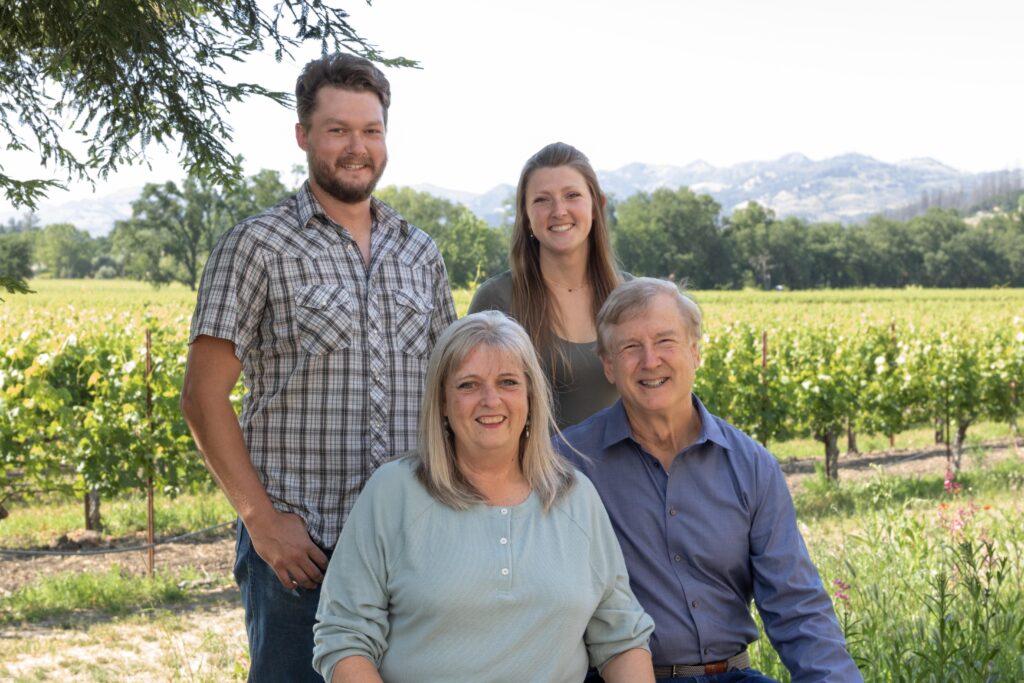
“Walking through the vineyards right before harvest is my favorite time. You can begin to see if your hard work is paying off with the promise of some great wines.”
~ Frank Ballentine, fourth generation
For the past decade, Frank and Bruce have embarked on a continuous journey of experimentation with our 100+-year-old vineyards, unlocking their perpetual potential to craft new, exceptional wines annually. Our commitment to sustainability reflects not only a responsibility to the land but also a dedication to embracing the evolving dynamics of the wine industry. As we move forward, we honor our past to shape a future that mirrors the enduring legacy of the Ballentine family, spanning nearly 120 years in Napa Valley.
Team

Cellar & Tasting Room Team
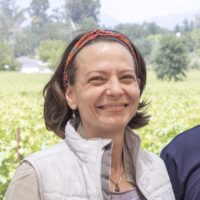
Angela Carvalho
Assistant Winemaker
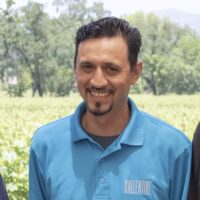
Luis Montanez
Cellar Master
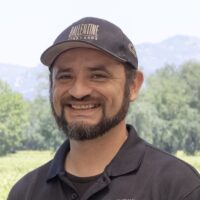
Eric Ortiz
Wine Production
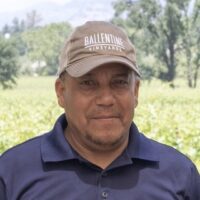
Juan De Loera Garcia
Wine Production
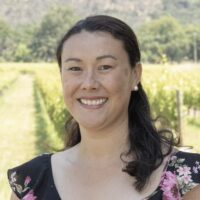
Jackie Deveny
DTC Director
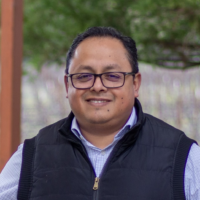
Miguel Olguin
Estate Host


